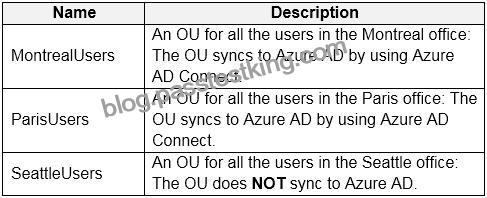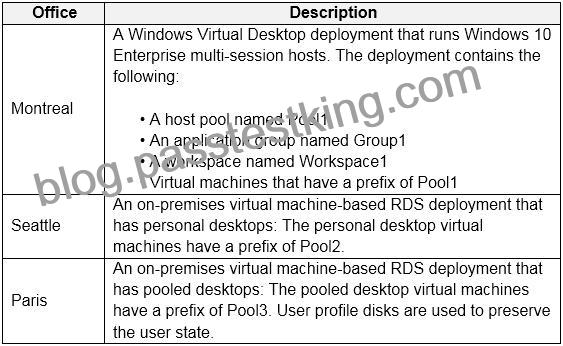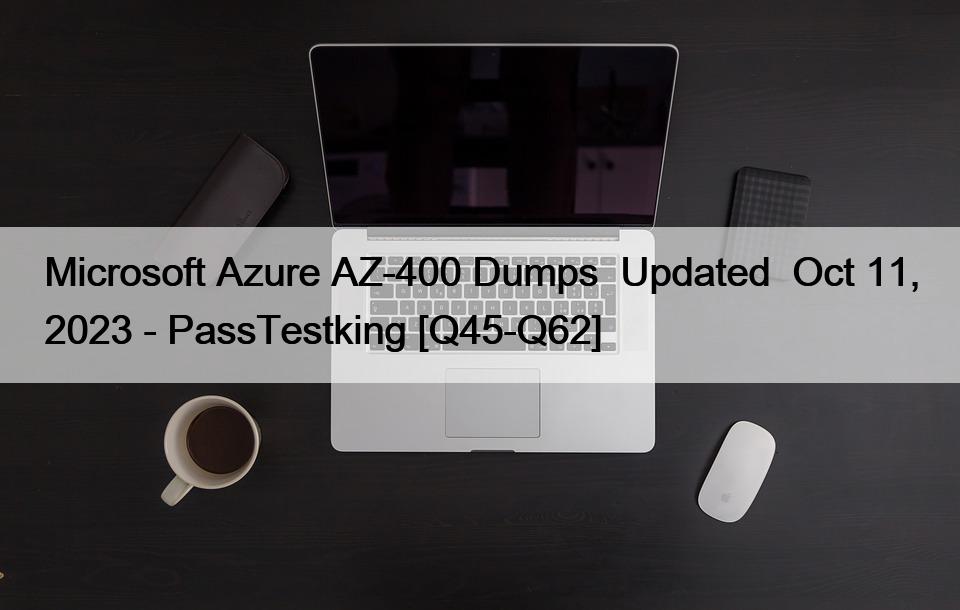QUESTION 37
You have an Azure Active Directory (Azure AD) tenant named contoso.com.
You use a user account named Admin1 to deploy an Azure Active Directory Domain Services (Azure AD DS) managed domain named aaddscontoso.com to a virtual network named VNET1.
You plan to deploy an Azure Virtual Desktop host pool named Pool1 to VNET1.
You need to ensure that you can use the Admin1 user account to deploy Windows 10 Enterprise session hosts to Pool1.
What should you do first?
Reference:
https://docs.microsoft.com/en-us/azure/virtual-desktop/create-host-pools-azure-marketplace?tabs=azure-portal
Topic 2, Contoso. Ltd
Existing Infrastructure
Active Directory
The network contains an on-premises Active Directory domain named contoso.com and an Azure Active Directory (Azure AD) tenant. One of the domain controllers runs as an Azure virtual machine and connects to a virtual network named VNET1. All internal name resolution is provided by DNS server that run on the domain controllers.
The on-premises Active Directory domain contains the organizational units (OUs) shown in the following table.

The on-premises Active Directory domain contains the users shown in the following table.

The Azure AD tenant contains the cloud-only users shown in the following table.

Existing Infrastructure. Network Infrastructure
All the Azure virtual networks are peered. The on-premises network connects to the virtual networks.
All servers run Windows Server 2019. All laptops and desktop computers run Windows 10 Enterprise.
Since users often work on confidential documents, all the users use their computer as a client for connecting to Remote Desktop Services (RDS).
In the West US Azure region, you have the storage accounts shown in the following table.

Existing Infrastructure. Remote Desktop Infrastructure
Contoso has a Remote Desktop infrastructure shown in the following table.

Requirements
Planned Changes
Contoso plans to implement the following changes:
Implement FSLogix profile containers for the Paris offices.
Deploy a Windows Virtual Desktop host pool named Pool4.
Migrate the RDS deployment in the Seattle office to Windows Virtual Desktop in the West US Azure region.
Requirements. Pool4 Configuration
Pool4 will have the following settings:
Host pool type: Pooled
Max session limit: 7
Load balancing algorithm: Depth-first
Images: Windows 10 Enterprise multi-session
Virtual machine size: Standard D2s v3
Name prefix: Pool4
Number of VMs: 5
Virtual network: VNET4
Requirements. Technical Requirements
Contoso identifies the following technical requirements:
Before migrating the RDS deployment in the Seattle office, obtain the recommended deployment configuration based on the current RDS utilization.
For the Windows Virtual Desktop deployment in the Montreal office, disable audio output in the device redirection settings.
For the Windows Virtual Desktop deployment in the Seattle office, store the FSLogix profile containers in Azure Storage.
Enable Operator2 to modify the RDP Properties of the Windows Virtual Desktop deployment in the Montreal office.
From a server named Server1, convert the user profile clicks to the FSLogix profile containers.
Ensure that the Pool1 virtual machines only run during business hours.
Use the principle of least privilege.





